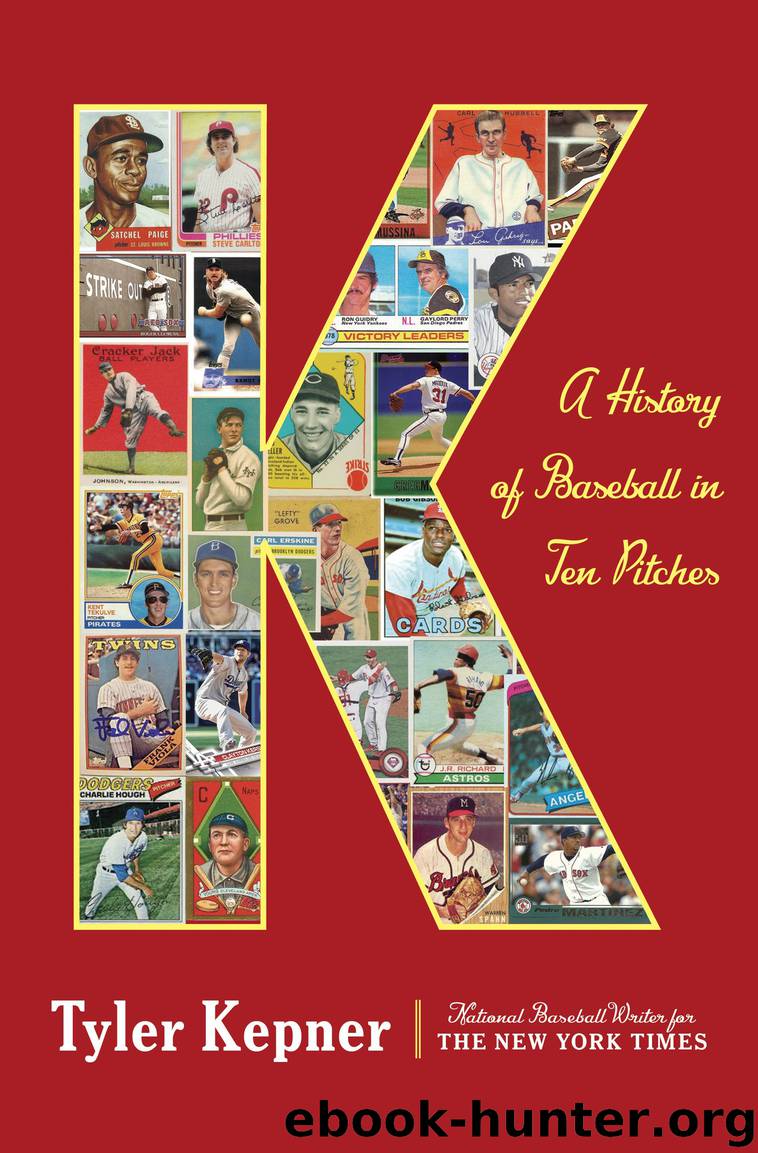K by Tyler Kepner

Author:Tyler Kepner
Language: eng
Format: epub
Publisher: Knopf Doubleday Publishing Group
Published: 2019-04-01T16:00:00+00:00
* * *
————
Bobby Valentine managed in Japan in 1995. At the end of the next season, he began a long stint managing the Mets. When Valentine returned to Japan as a manager in 2004, he recognized something that had largely disappeared from the American game: the splitter.
“It was a noticeable difference, because they just never discontinued the process,” Valentine says. “We were similar in the ’80s and early ’90s, a similar amount of guys throwing it, I’ll bet. And then we stopped, and they continued.”
Major league teams overreacted, Valentine said, when split-finger maestros like Garrelts, Scott, and Sutter got hurt. The panic never spread overseas, Valentine says, partly because the mind-set behind the splitter was deeply embedded in Japanese baseball culture. It is the perfect substitute for the changeup.
“The reason the Japanese throw it as opposed to a straight changeup is because they don’t think you should throw a slower pitch without movement,” Valentine says. “It’s just part of the pitching vernacular: slower pitches move, faster pitches are straight; it’s just the way the Japanese baseball brain works. They’ll use a split, some form of a split, because they know it’s a very similar arm stroke and the only thing that’s different is the placement on the ball, which will propel the ball forward and also relieve the force behind the ball, so therefore you can’t throw it as fast as your arm speed would dictate.”
Hideki Matsui, who left Japan to join the Yankees in 2003, said his biggest adjustment as a hitter was facing so many changeups; the pitch was indeed rarely thrown in Japan, but nearly everyone threw a splitter. Japanese pitchers who preceded Matsui to the majors—Hideo Nomo, Shigetoshi Hasegwa, Kazuhiro Sasaki—brought the split with them. So did others who followed, like Hiroki Kuroda, Junichi Tazawa, and Koji Uehara.
“I used to only throw sliders and I wanted to expand my repertoire, and that’s how I started throwing the pitch,” says Uehara, the former Boston closer, whose splitter struck out St. Louis’s Matt Carpenter for the final out of the 2013 World Series. Uehara’s inspiration?
“With me it’s Hideo Nomo,” he says. “And with older generations there was a player called Shigeru Sugishita. I’ve only heard of him; I’ve never seen him throw. But he was supposed to have a really devastating splitter.”
Sugishita threw his last pitch in 1961, long before Uehara was born. Known as the God of Forkballs, he was a three-time winner of the Sawamura Award as Japan’s best pitcher. In 1954, for the Chunichi Dragons, he was also the Central League’s MVP, going 32–12 with a 1.39 ERA across a staggering 395⅓ innings. Then he was MVP of the Japan Series. A god, indeed.
Sugishita turned 91 in 2016, when my friend Gaku Tashiro of Sankei Sports asked him a few questions for this book. Sugishita said that he learned the forkball at Meiji University in 1948, after first trying a knuckleball as an off-speed pitch. A coach noticed he had longer fingers than most pitchers and suggested the forkball, then thrown by only a few U.
Download
This site does not store any files on its server. We only index and link to content provided by other sites. Please contact the content providers to delete copyright contents if any and email us, we'll remove relevant links or contents immediately.
The Inner Game of Tennis by W. Timothy Gallwey(3479)
Unstoppable by Maria Sharapova(3409)
Urban Outlaw by Magnus Walker(3246)
Crazy Is My Superpower by A.J. Mendez Brooks(3208)
Mind Fuck by Manna Francis(3040)
The Social Psychology of Inequality by Unknown(2771)
The Fight by Norman Mailer(2709)
Unstoppable: My Life So Far by Maria Sharapova(2387)
Accepted by Pat Patterson(2219)
Going Long by Editors of Runner's World(2215)
Futebol by Alex Bellos(2138)
The Happy Runner by David Roche(2125)
Motorcycle Man by Kristen Ashley(2117)
Backpacker the Complete Guide to Backpacking by Backpacker Magazine(2111)
The Sports Gene: Inside the Science of Extraordinary Athletic Performance by David Epstein(2064)
Sea Survival Handbook by Keith Colwell(2044)
Peak: Secrets from the New Science of Expertise by Anders Ericsson & Robert Pool(1927)
Endure by Alex Hutchinson(1873)
The Call of Everest by Conrad Anker(1789)
